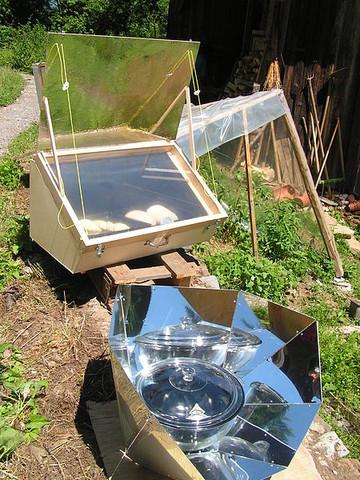
This is a guest post by Deborah Jeanne Sergeant
Any prepper worth his bug out bag packs light. You can minimize the need to lug cooking fuel if you master solar cooking. The technique requires only a few supplies and sunshine to prepare hot meals.
Reflection makes solar cooking possible. Commercial solar cookers' shiny panels concentrate the sun's heat onto the food pan. Users reposition the reflectors as needed. Most cookers use a covered food pan and raise it on a trivet for better air circulation.
You can pack a camping solar cooker or construct your own. You can even make one out of scavenged materials if you're on the go. Stick with food-safe items such as a clean, used food can for the pan if you have no camping pots or pans. Use a medium-sized cardboard box, ideally dark-colored. If you make a cooker in advance, use a collapsible box painted inside with black grill paint.
Start cooking early: eight or nine o'clock for lunch. Solar cooking is like using a slow cooker unless the sun is very intense. Place the food pan inside on a light, wire frame trivet. Seal the top with clear plastic. A mirror, piece of shiny metal or an aluminum foil-covered box flap may serve as a reflector. Place it above the box and facing the sun. Tilt the reflector to reflect sunlight onto the food pan.
A parabolic-style cooker heats more quickly and up to 400 degrees Fahrenheit. Hang a covered pot as you would for a campfire. Instead of lighting a fire underneath, position reflectors facing the sun and closely behind and under the pot in a bowl shape to reflect light under the pot.
Panel cookers use reflectors all around food in a clear container to focus sunlight on the food inside.
Cooking lots of dense food at once may be difficult in a solar cooker. Using several small food pans works better than stuffing a large one. Generally, foods that cook well in slow cookers will in solar cookers, too. As with any other prepper strategy, practice pays. Bon appétit.
